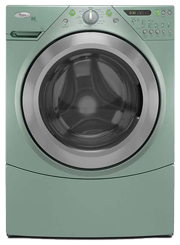Dryer Repair Guide
 For the DIY-inclined, the below guides will assist in completing simple repairs on your dryer. It is impossible to write guides applicable for every model of dryer, so in some cases there may be additional steps required to complete repairs.
For the DIY-inclined, the below guides will assist in completing simple repairs on your dryer. It is impossible to write guides applicable for every model of dryer, so in some cases there may be additional steps required to complete repairs.
DISCLAIMER: Appliance Repair can be dangerous, especially when dealing with electricity. The electrical current generated from wall outlets can be enough to kill someone. Please exercise extreme caution when working with appliances. GSAR cannot be held liable for injuries due to misuse of our repair guides.
How to Fix a Dryer That Won’t Start
One of the most common dryer problems is failure to start, which can be caused by control board, motor switch, or fuse failure. These issues can be difficult to diagnose and repair, but the repair can be relatively simple if related to the power or door switch. Extremely important: to avoid risk of electric shock, make sure the dryer is unplugged at all times while attempting repairs.
Incoming Current Diagnosis / Repair
The simplest thing to test is power to the dryer, so let’s start there.
- Locate proper breaker switch(es) on breaker panel. Reset the switches off and then turn to on. Try starting the dryer again — if it starts, your problem is solved.
- Unplug the dryer cord and check it for damage. Follow the cord from the plug to the back of the dryer. You should see a cover plate that is covering where the cord connects to the terminal block. Remove this cover plate and with a flashlight look for damage like burned connections or a disconnected wire. If the dryer cord is damaged, it will likely need to be replaced.
- Check the plug for damage such as loose or burned prongs. If the prongs are burned, there may be a problem with the appliance outlet.
- Ensure that the connections at the dryer’s terminal block are tight.
- Put cover plate back on and plug the dryer back in.
- After making sure the breaker switches are on, try to turn on the dryer again. If it still doesn’t work, the issue is probably not related to incoming power. Proceed to door switch diagnosis and repair below!
Door Switch Diagnosis
Door switch diagnosis and repair can be particularly troublesome because of the large number of build variations across manufacturers requiring different means for accessing the dryer’s door switch. The guide below should guide you to diagnosing and repairing the dryer’s door switch. If in doubt, call for professional service.
- Unplug the dryer.
- Looking inside the dryer door, locate the door switch. If the switch is above the drum opening, it’s likely accessed from the top. If the switch is below the drum, it’s most likely accessed from the bottom.
- Look for the visible signs of a damaged switch. If the switch is damaged, there will be broken plastic or a stuck switch. Try to activate the switch by hand. Listen for a clicking noise — it will be very faint. If there is damage or no clicking sound, the door switch may require replacement.
- Remove the bottom panel to access the switch below the drum. Lift the top of dryer to access the switch that is above the drum. You access that dryer by removing a bottom panel or opening the top of the dryer by depressing nonvisible clips with a putty knife or removing bolts/screws. On the top of the machine sometimes you have the lint filter. Underneath the lint filter lid you will find screws. You must remove these screws to lift the top of these style dryers. If there is no lint catcher you don’t need to worry about removing any screws before opening the top of the dryer.
- Look for the wires that lead to the switch. Since the wires will be disconnected, take a picture or take note of the dryer connections in order to replace them later.
- Disconnect the wire connections.
- There should be three wire connections: green (the grounding wire) and two others. Put a jumper wire (a wire with two exposed wire ends) from the two wires which are not green.Twist the wire ends of the jumper wire to allow them to fit into the wire connectors, which should be unplugged from the back of the switch. The green is the ground wire. The goal is to bypass door switch activation with this jumper wire.
- MAKE SURE NOTHING METAL IS TOUCHING ANYTHING METAL. Make sure that none of the exposed wire is touching anything inside the dryer or the dryer casing.
- Plug the dryer back in. Make sure not to touch or lean on the dryer when doing this.
- Try starting the dryer again. If the dryer starts, the door switch needs replacement. It’s not a good idea to leave a jumper in place during regular dryer operation. If the dryer doesn’t start, call for professional service.
Door Switch Replacement
If you’ve reached this point, it has been determined that the door switch is malfunctioning and needs replacement to restore proper operation of the dryer. Proceed with the following steps to replace the door switch.
- Unplug the dryer.
- Remove the jumper wire from wire connectors that was used to test the door switch during door switch diagnosis.
- Write down the model number of the dryer down and either contact a parts distributor or use an online service to find the associated part number for the door switch.
- Order the new switch online or acquire the part locally.
- Replace the switch. Most door switches are clipped in. The part of the switch which holds it in place must be depressed.
- Reviewing notes or the photo taken in Step 5 of Diagnosis, plug wires in the switch the in the same color sequence that it had before.
- Put dryer back together in the opposite way you accessed the switch.
- Plug dryer back in and start the dryer.
After the door switch has been replaced, the dryer should turn on. If it does, give yourself a pat on the back! If the dryer is still inoperable after door switch replacement, there was either a problem during the repair process or a more serious underlying issue with the dryer. If this is the case, it is best to call for professional service.
How to Replace a Dryer Thermal Fuse
The dryer thermal fuse is a safety feature found on all dryers which ceases the operation of the dryer when it reaches an unsafe temperature. After the thermal fuse has blown, the dryer will either no longer start or no longer heat. Replacing a dryer fuse can be a relatively simple repair by following these easy steps. These steps are for dryers with the fuse located in the back.
In order the acquire the correct replacement thermal fuse for the dryer, locate the model number of the dryer. The model number is typically located either inside of the door, on the upper left hand back corner of the cabinet, or near the front of the cabinet side. For gas dryers, it may be behind the front access panel.
- Unplug the dryer (to eliminate the risk of electrocution) and move it away from the wall such that there is enough space to work.
- Disconnect the dryer vent hose.
- Use a screwdriver or nut driver to remove the screws holding the rear panel to the dryer. Pull the panel away and set it aside. Place the screws somewhere safe so you don’t lose them.
- Locate the thermal fuse. You should see a white plastic piece with wires connected to it. It is usually rectangular.
- Disconnect the wires from the thermal fuse, noting how they are connected to ensure that they may be connected the same way to the new thermal fuse. The procedure for removing the dryer thermal fuse will vary from dryer to dryer. Some snap into and out of place, while others may be secured with a screw or nut.
- Before replacing the dryer thermal fuse, cleaning should be done to ensure that the dryer will not overheat and blow the fuse again. Look for blockages and clogs in areas such as the exhaust box and around the vent hose. Use a vacuum to clear dust and other debris. Remove any lint in your dryer’s exhaust vent.
- Replace the dryer thermal fuse by inserting the new one using the same method you used to remove it. Remember to reconnect the wires in the same way they were connected to the previous thermal fuse.
- Replace the rear panel in the same way that it was removed.
- Reconnect the vent hose to the back of the dryer.
- Move the dryer back to its original position and plug it back in.
Test the dryer — it should turn on and heat. If after replacing your dryer thermal fuse there are still problems with the dryer, you should call for professional service.

